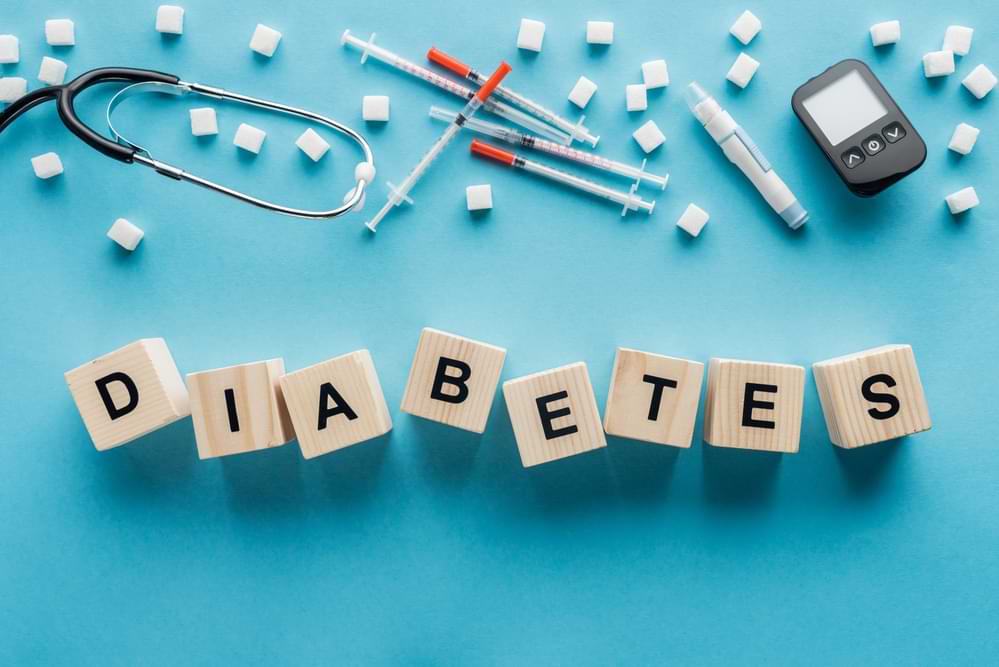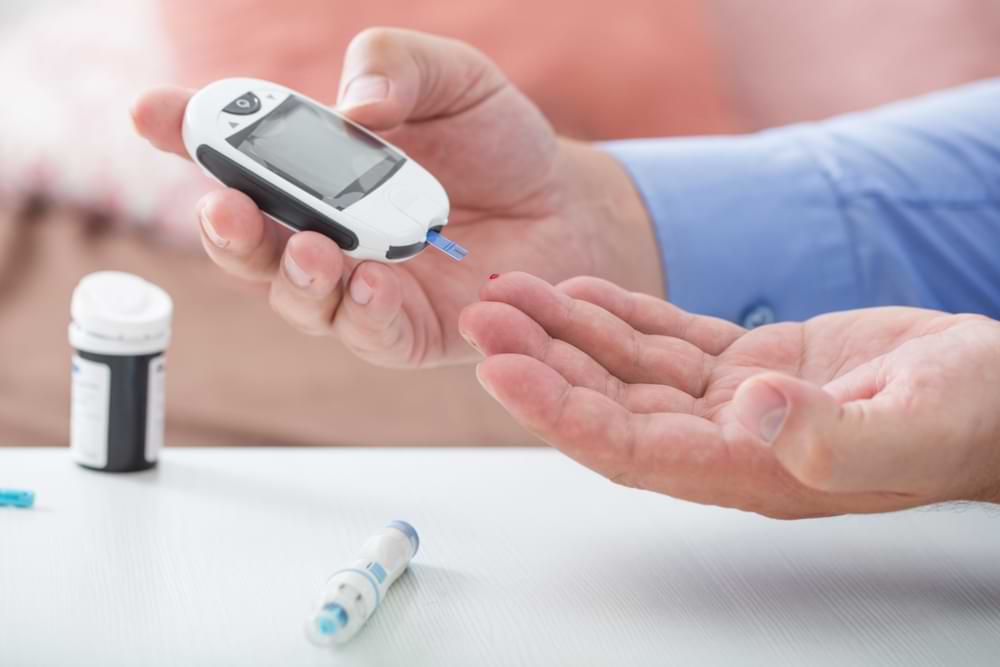Beat Diabetic Retinopathy: Surprising Lifestyle Changes That Work
Did you know that your daily habits could be a game-changer in managing diabetic retinopathy?
Diabetic retinopathy is a diabetes-related eye condition that affects the retina’s blood vessels leading to blurred vision. When not managed effectively, it can escalate from mild to severe, leading to complications like retinal detachment, macular edema, and potentially complete vision loss. It’s a condition that requires careful management.
Medication plays a key role in controlling diabetic conditions. It’s vital to follow your doctor’s advice on medication to keep your blood sugar levels in check.
But many people think that the progression of diabetic retinopathy is inevitable and that medication is the only solution.
Not true.
Your lifestyle choices are equally important as diabetic medicine and can play an important part in slowing or stopping retinal damage.
Integrating regular exercise, maintaining a balanced diet, and avoiding other harmful lifestyle factors can help to effectively manage diabetic retinopathy, significantly reducing the risk of vision impairment.
In case you don’t know me, I’m Martin Robinson, the owner and principal optometrist at Martin’s Eyecare in Hobart. With my extensive experience in managing eye conditions, including diabetic retinopathy, I understand the nuances of this condition and the best strategies to manage it.
Take for example, a 52-year-old patient of mine; an accountant in Hobart. Despite his adherence to diabetes medication, his eye health did not improve until we tackled his lifestyle habits. With encouragement, he included brisk daily walking into his routine. This not only improved his blood glucose control but also his blood circulation, directly benefiting his eye health.
If you have diabetes and you haven’t had your eyes checked in a while I’d like you to go ahead and book an appointment at Martin’s Eyecare so that we can discuss a plan to maintain your ocular functions.
And if you’re wondering how medication, exercise, and diet can influence your eye health, I invite you to continue reading. Let’s delve deeper into these connections together.
At Risk Groups
The following groups of people have a higher risk profile for suffering diabetic retinopathy.
- Individuals with Type 1 and Type 2 Diabetes: Diabetic retinopathy occurs as a complication of diabetes. The risk increases with the length of time one has diabetes, due to the prolonged exposure to high blood sugar levels damaging the retinal blood vessels..
- People with Inconsistent Blood Sugar Management: Among those with diabetes, inconsistent or poor management of blood sugar levels significantly heightens the risk of damage to the retinal vessels.
- Individuals with High Blood Pressure and High Cholesterol: These conditions can exacerbate the damage caused by diabetes to the retinal vessels. High blood pressure and cholesterol contribute to the hardening and narrowing of arteries, which can impede blood flow to the retina.
- Tobacco Users: Smoking or using other forms of tobacco increases the risk of diabetic retinopathy. Tobacco use exacerbates blood vessel damage and hinders blood flow, worsening the effects of diabetes on the eyes.
- Older Adults: Age is a significant risk factor as the likelihood of developing diabetic retinopathy increases with age. Older individuals often have a longer history of diabetes, compounding the risk of eye damage.
- Pregnant Women: Pregnancy can cause fluctuations in blood sugar levels, increasing the risk for diabetic retinopathy. Hormonal changes during pregnancy can also affect the blood vessels in the retina.
- People with a Family History of Diabetes: A family history of diabetes increases the likelihood of developing diabetic retinopathy. Genetic factors can contribute to susceptibility to diabetes and its complications.
- Certain Ethnic Groups: Aboriginal and Torres Strait Islander peoples, as well as African-American, Hispanic, and South Asian communities, show higher prevalence rates of diabetic retinopathy. This increased risk is partly due to higher rates of diabetes and associated risk factors in these ethnic groups.
The Impact of Diet on Diabetic Retinopathy
Your diet plays a significant role in managing diabetic retinopathy. It’s not just about keeping your blood sugar levels in check; it’s also about nourishing your body, and particularly your eyes, with the right nutrients.
Nutritional Choices for Eye Health
Foods rich in vitamins and antioxidants can be beneficial for diabetic retinopathy patients. Leafy greens like spinach and kale, along with bell peppers, carrots, and berries, are packed with vitamins. Omega-3 fatty acids, found in fish like salmon and sardines, are also crucial as they can help reduce inflammation and protect the delicate blood vessels in your eyes.
The impact of sugar and carbohydrate intake on eye health is also significant. High sugar levels can lead to spikes in blood glucose, which can, in turn, damage the blood vessels in your retina. It’s important to manage your carb intake, opting for complex carbohydrates like whole grains, which have a more gradual effect on blood sugar.
Staying Hydrated: A Simple Yet Effective Tactic
Hydration is often overlooked when it comes to eye health. Staying well-hydrated is essential in maintaining the health of your eyes. Adequate hydration helps maintain the salt balance in your body, which is important in managing diabetic retinopathy. It can also help with the metabolism of glucose and reduce the risk of blood sugar spikes.
Remember, managing diabetic retinopathy is not just about what you avoid, but also about what you include in your diet. A balanced, nutritious diet can be a powerful tool in maintaining not just overall health, but specifically the health of your eyes.
IMPORTANT: These are general nutritional tips. For more specific advice to suit your own particular circumstances, it is always advisable to consult with a professional dietician.


Exercise: A Powerful Tool Against Diabetic Retinopathy
Exercise is more than just a way to stay fit; it’s a crucial element in the management of diabetic retinopathy. Regular physical activity helps in multiple ways, from improving blood circulation to aiding in blood sugar regulation.
Safe Exercise Practices for Diabetics
For individuals with diabetic retinopathy, safety during exercise is key. It’s important to choose activities that are low-impact and gentle on the eyes. Activities like walking, swimming, or cycling are excellent choices. These exercises increase your heart rate and improve circulation without putting excessive strain on your eyes. Yoga and Pilates can also be beneficial, offering the dual benefits of physical activity and stress reduction.
Always start slow, especially if you’re new to regular exercise, and gradually increase the intensity. It’s also wise to consult with your healthcare provider before starting any new exercise regimen, particularly to understand how it fits into your overall diabetes management plan.
How Regular Physical Activity Can Benefit Eye Health
Regular exercise improves blood flow throughout your body, including to the tiny blood vessels in your eyes. This enhanced circulation is vital in managing diabetic retinopathy, as it can help reduce the risk of blood vessel damage in the retina. Additionally, exercise aids in controlling weight and reducing blood pressure, both of which are important for maintaining overall eye health.
The Role of Exercise in Blood Sugar Regulation
Exercise plays a significant role in how your body regulates blood sugar levels. Physical activity helps your body use insulin more efficiently, which in turn helps manage your blood sugar levels. This is particularly important for diabetic retinopathy, as stable blood sugar levels can prevent further damage to the blood vessels in the eyes.
Remember, incorporating regular exercise into your routine doesn’t mean you need to run marathons. Even moderate, consistent activities can have a profound impact on your eye health and help manage the symptoms of diabetic retinopathy.
Here is the table listing exercise options along with their suggested duration and frequency for controlling diabetes:
|
Exercise Type |
Recommended Duration |
Frequency |
|---|---|---|
|
Walking |
30 minutes |
Daily |
|
Cycling |
30-45 minutes |
3-5 times a week |
|
Swimming |
30 minutes |
3-5 times a week |
|
Yoga |
30-60 minutes |
3-5 times a week |
|
Strength Training |
20-30 minutes |
2-3 times a week |
These exercises are chosen for their effectiveness in improving blood circulation and aiding in blood sugar regulation, both of which are key in managing diabetes and its related complications, such as diabetic retinopathy. Regular physical activity as part of a holistic health plan can greatly contribute to overall diabetes management.
IMPORTANT: These are general health and well being tips. For more specific advice to suit your own particular circumstances, it is always advisable to consult with a professional exercise trainer.
To learn more about what diabetic retinopathy is and the progression of the disease, watch the following video from Dr. Donovan’s YouTube channel.
Stress Management and Mental Health
It’s often underestimated how much our mental health and stress levels can impact conditions like diabetic retinopathy. Managing stress isn’t just about feeling better mentally; it’s also about taking care of your physical health, including your eyes.
The Link Between Stress and Eye Health
Stress can have a direct impact on diabetic retinopathy. High stress levels can lead to fluctuations in blood sugar levels, partly due to the release of stress hormones like cortisol and adrenaline. These fluctuations can exacerbate diabetic retinopathy, as unstable blood sugar levels can increase the risk of damage to the blood vessels in the retina.
Moreover, stress can also make it harder to maintain healthy lifestyle habits, such as eating well, exercising regularly, and managing your medication effectively. This can create a cycle where stress worsens diabetic retinopathy symptoms, which in turn can lead to more stress.
Techniques for Stress Reduction
Managing stress is essential, and the good news is that there are simple, effective methods that can help:
- Mindfulness and Meditation: Practices like mindfulness meditation can be very effective in reducing stress. They help you focus on the present moment, reducing anxiety and improving your mood.
- Regular Exercise: As mentioned before, exercise isn’t just good for your physical health; it’s also a powerful stress reliever. Physical activity releases endorphins, which are natural mood lifters.
- Adequate Sleep: Good sleep is crucial for stress management. Aim for 7-8 hours of quality sleep each night to help your body and mind recover and rejuvenate.
- Time Management: Often, stress is related to feeling overwhelmed. Effective time management, including setting realistic goals and taking breaks, can help reduce stress levels.
- Seeking Support: Sometimes, talking to a professional or joining a support group can be beneficial. Sharing your experiences with others who understand can be incredibly relieving.
Remember, taking care of your mental health is as important as managing your physical health. Reducing stress can have a positive impact on your blood sugar levels and, by extension, your eye health. Incorporating stress management techniques into your daily routine can be a key part of managing diabetic retinopathy.
The Impact of Smoking and Alcohol
Let’s talk about smoking and alcohol consumption. You might already know they’re not the best for your overall health, but how do they specifically affect diabetic retinopathy? In both cases, moderation or, better yet, avoidance, is key.
Smoking: A Risk Factor for Diabetic Retinopathy
Smoking can significantly worsen diabetic retinopathy. It’s like adding a corrosive element to your body’s system. Smoking damages your blood vessels, making them more likely to leak or become blocked. This can accelerate the damage to the delicate blood vessels in your retina caused by diabetic retinopathy. Essentially, if diabetic retinopathy is a fire, smoking is like throwing gasoline on it – it only makes things worse.
Alcohol Consumption and Eye Health
While an occasional drink might not be harmful, regular or excessive alcohol consumption can have a negative impact on diabetic retinopathy. Alcohol can affect blood sugar levels, sometimes causing them to spike or drop unpredictably. This rollercoaster effect on your blood sugar can be harmful to the blood vessels in your eyes.
Medication Management
Your diabetes medication is a key player in controlling your blood sugar levels, and consequently, in managing diabetic retinopathy. Understanding how these medications affect your blood sugar levels and, in turn, your eye health is important.
Medications can vary in how they work, their side effects, and their impact on your blood glucose levels. Therefore, it’s crucial to follow the prescribed medication regimen closely and discuss any concerns with your healthcare provider. If you notice any changes in your vision, it’s important to inform both your optometrist and your doctor, as this could indicate a need for adjustments in your medication.
Don’t overlook the importance of medication adherence. Missing doses or not taking medication as prescribed can lead to fluctuations in blood sugar levels, which can accelerate eye damage.
The Importance of Regular Eye Checkups
When it comes to diabetic retinopathy, staying ahead of the game is key, and this is where regular eye checkups come into play. They’re not just about updating your glasses prescription; they’re a critical part of your overall health management.
Detecting Changes Early
Regular eye examinations play a crucial role in the early detection of diabetic retinopathy. By closely monitoring the health of your eyes, an optometrist can spot changes that might not yet be causing symptoms. Early detection means early intervention, which can significantly slow down the progression of diabetic retinopathy. This proactive approach can mean the difference between minor adjustments in your management plan and more serious interventions.
In these checkups, we don’t just look at your vision sharpness; we examine the health of your retina and the state of your blood vessels. These detailed examinations can reveal the earliest signs of damage due to high blood sugar levels, allowing for timely adjustments in your treatment plan.
Working With Your Eye Care Specialist
Effectively communicating with your optometrist is essential. Be open about any changes in your vision or any concerns you might have. It’s also important to share updates about your overall diabetes management, as changes in medication or blood sugar levels can affect your eye health.
Remember, your optometrist is part of your healthcare team. Working closely with them can help you maintain not just good vision but also overall health. During your appointments, don’t hesitate to ask questions or seek advice on lifestyle changes that can benefit your eye health. We’re here to guide and support you in managing diabetic retinopathy.
Regular eye checkups are a vital part of your healthcare routine. They help catch problems early and keep your eyes, and by extension, you, in the best possible health. So, if it’s been a while since your last eye exam, consider booking an appointment at Martin’s Eyecare. It’s a simple step, but it can have a lasting impact on your vision and overall quality of life.
When to See an Eye Doctor Immediately
For those managing diabetic retinopathy, understanding when to see an eye doctor immediately is crucial. If you notice any sudden changes in your vision, such as a significant increase in floaters, flashes of light, or a sudden veil or curtain obstructing your field of vision, these are urgent signs that require immediate medical attention.
Also, if you experience sharp pain in the eye, severe redness, or any visual disturbance like blurring or dark spots that wasn’t present before, these could be indicators of advancing diabetic retinopathy or other related eye conditions.
Diabetic retinopathy can progress rapidly and sometimes without noticeable pain, so it’s vital to respond swiftly to any changes to protect your vision. Regular check-ups are essential, but between appointments, any sudden or unusual changes in your eyesight should prompt an immediate visit to your eye doctor.
Conclusion
As we wrap up, let’s consider a striking statistic: According to a recent study from the Australian Institute of Health and Welfare, 28.5% of Australians with known diabetes reported having diabetic retinopathy. This highlights the seriousness of the problem in our country and the importance of proactive management.
Throughout this article, we’ve covered several key strategies for managing diabetic retinopathy: maintaining a balanced diet rich in nutrients beneficial for eye health, regular and safe exercise to improve blood circulation, effective management of blood sugar levels, stress reduction techniques, ensuring quality sleep, and understanding the impact of smoking and alcohol on your eye health. Diabetic retinopathy, if not properly managed, can significantly impair your vision and, consequently, your quality of life.
At Martin’s Eyecare, we’re committed to providing personalized care and support. We understand the complexities of diabetic retinopathy and can work with you to develop a management plan that suits your unique needs and lifestyle. So, don’t hesitate to reach out. Your vision is precious, and we’re here to help you protect it.
Come and see us at our Glenorchy optometry practice, just a 10 minute drive from the centre of Hobart.
Book your eye care appointment with us today at Martin’s Eyecare.
Call (03) 6272 8423 or use the “Book Appointment” button below.
– Martin Robinson, Optometrist & Owner.
